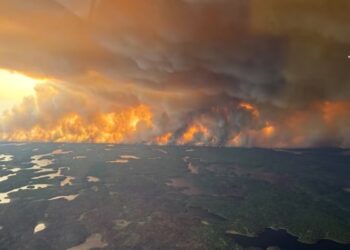Understanding the Decline in Wildfire Impact in the U.S.
The Recent Data on Wildfires
In 2023, the United States saw significant changes in wildfire statistics. Federal fire suppression costs have dropped to $3.2 billion, down from $3.6 billion in the previous year. This reduction is part of a broader trend that showcases the changing landscape of wildfires in the country. The area burned by wildfires also witnessed a drastic decline, with only 2.7 million acres affected—marking the lowest figure since 1998.
Historical Context: Wildfire Acreage Trends
To grasp the full impact of this year’s data, it’s essential to look at long-term trends. Over the past four decades, the annual acreage burned by wildfires in the U.S. has generally increased. During the 1990s, it was typical for between 13 to 16 million acres to burn over a five-year period. However, this trend changed markedly in the 2000s and 2010s when the burned areas escalated to over 30 million acres.
The Peak of Wildfire Destruction
The years between 2004 and 2008 were particularly devastating, with more than 41 million acres burned in total. This significant spike was largely driven by various environmental factors, including climate conditions that foster wildfire growth and spread.
Factors Contributing to Wildfire Severity
Climate Change
Climate change has been a significant driver of increased wildfire activities. The rise in global temperatures has led to drier conditions across many regions, which in turn extends fire seasons and makes areas more susceptible to ignition. Higher temperatures often lead to drier vegetation, which acts as fuel for wildfires.
Human Expansion into Wildlands
As human settlements continue to expand further into forested regions, the complexity and cost of fire management have also escalated. The encroachment on wildlands requires increased resources for fire suppression strategies and techniques to protect homes and livelihoods from potential fire threats.
The Economic Implications of Wildfires
Increasing Costs
As the acreage destroyed by wildfires has risen, so too have the associated costs for wildfire mitigation and recovery. The financial implications are profound, resulting in skyrocketing expenses for both prevention efforts and damages incurred from wildfires.
The Burden on Resources
The need for effective fire suppression strategies has necessitated a greater allocation of federal and state resources. With the costs of these operations decreasing in the latest data, there remains an ongoing conversation about resource allocation for prevention versus suppression.
Future Predictions for U.S. Wildfires
Looking ahead, experts continue to analyze the shifting dynamics of wildfires in the United States. As climate change continues to bring varying weather patterns, predicting future wildfire risks and behaviors becomes increasingly complex. Understanding these trends is essential for policymakers, residents in fire-prone areas, and environmental organizations aiming to create effective strategies for mitigation and recovery.
Conclusion
As wildfires evolve in both their intensity and frequency, ongoing research, preventive measures, and effective response strategies will be critical in managing this natural disaster’s impact on communities and ecosystems. By analyzing current data and historical trends, we can better prepare for the challenges that lie ahead in wildfire resilience.






